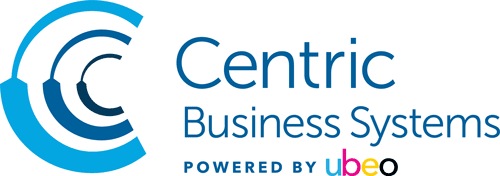Six Steps to Improved Document Management in 2021
Kicking off the new year often starts with identifying opportunities for change. While 2020 showed us how resilient we can be, it also offered lessons on the importance of efficient document and business process management in meeting both the expected and the unexpected business concerns any year might deliver. Even though business process workflows have become more digital, many still depend on printed documents. If you’re like 77% of organizations that say printing is still critical or very important to your business, here are six steps that can lead you to improved, more productive document management in 2021.
Inventory your printing hardware
Knowing the number, type, age, and location of all your firm’s printing devices serves multiple purposes in establishing a more efficient and productive document management strategy. Firms spread across multiple floors or building locations may find they need to add a device to better serve a particular department’s needs, and an overconcentration of print devices in another area may allow for a relocation to fill those needs. Old individual desktop printers can be costly to maintain and are not as energy efficient as newer models. Those can be replaced with new models or completely removed, with the work consolidated on faster, more energy-efficient MFDs.
Understanding where documents are printed also gives insight into underlying business processes and workflows, allowing you to map the workflow. This map can guide your decisions on whether to consolidate workflow steps, move departments to reduce the distance between workflow steps, or digitize the parts of the workflow that still require paper.
Identify the primary users of each device
Knowing the primary users of each printer, copier, or MFD forms the basis for understanding what type of device best serves those users and what feature and accessory set is needed to support their needs. For example, marketing may be best served by a high-volume color MFD with folding and booklet-making accessories, while the executive suite is best served with a small MFD used for the occasional print and scan job. If multiple groups use the same print device, are there any workflow or productivity bottlenecks? Does the device perform all the needed functions, or are employees going elsewhere when they have a job that requires a special feature? In that instance, upgrading the shared device to include that feature can significantly increase overall employee satisfaction and productivity.
Identify the primary purpose of each device
Now that you know who uses each device, find out what primary purpose it serves within the user group. Is it to print customer-facing materials such as catalogs, brochures, or invoices? Is the device used for printing document drafts for review and editing? Is an MFD used primarily to scan paper documents into a workflow? An important point to uncover is whether the device and the way it’s used is mission-critical to the department or office group using it.
If the primary use is to print, copy, or scan documents used for revenue-generating purposes (customer-facing brochures, advertising materials, customer invoices, etc.), then keeping or upgrading the device may be in the firm’s best interest. But if it is mostly being used to print documents that are then scanned into a workflow or filed in a filing cabinet, then a perfect opportunity exists to digitize those steps and reallocate the device, eliminating unnecessary printing and creating more efficient workflows.
Assess the consumption of consumables by department/unit
Reducing the amount of toner, ink, and paper used by print devices reduces printing costs in the office. However, knowing where those reduction opportunities lie means knowing how much each department, office unit, and print device is consuming. This information allows you to determine whether print devices are allocated correctly (e.g., high volume devices in high volume departments) or whether there is an opportunity to consolidate multiple printers into one higher volume MFD, reducing consumable costs and adding more productivity to the group.
Get a clear view of your current printing operating costs
Printing operating costs include consumables (toner and ink), maintenance or service agreements, and hardware cost (generally in the form of regular lease payments). Reviewing the past quarterly, six-month, or annual invoices for these items gives a high-level view of these expenses. With information from the previous four steps, you can create a detailed expense picture by department/user group and device. This pinpoints specific areas of cost reduction opportunity to guide better decision making on whether to consolidate, replace, or remove devices. Plan to actively review printing operating costs regularly with your solution provider since business needs and processes may change.
Look for areas of waste, process gaps, or potential security risks.
Finally, keep a lookout for areas that produce waste, hold up the flow of work in business processes (such as accounts receivable or accounts payable), or are potential security risks. The printing of emails wastes consumables, paper, and time. An accounts payable process workflow that requires a document to be printed, signed, then scanned back into the workflow can be fully digitized to eliminate printing, speeding up the process significantly (which could mean the difference between getting early payment discounts or not). Documents left in exit trays of printers, copiers, and MFDs are security risks that can be eliminated through secure printing practices or by digitizing document review, editing, and approval workflows.
Whether you’re looking at managing office printing or digital documents, a professional solution provider like Centric Business Systems can help you find opportunities to reduce costs, improve business processes, secure information, and make employees satisfied and more productive. Contact us at www.centricbiz.com to find out how our unique style of analysis and recommendations can help your firm enjoy 2021 with improved and more productive document management.
Tags: Document Management
